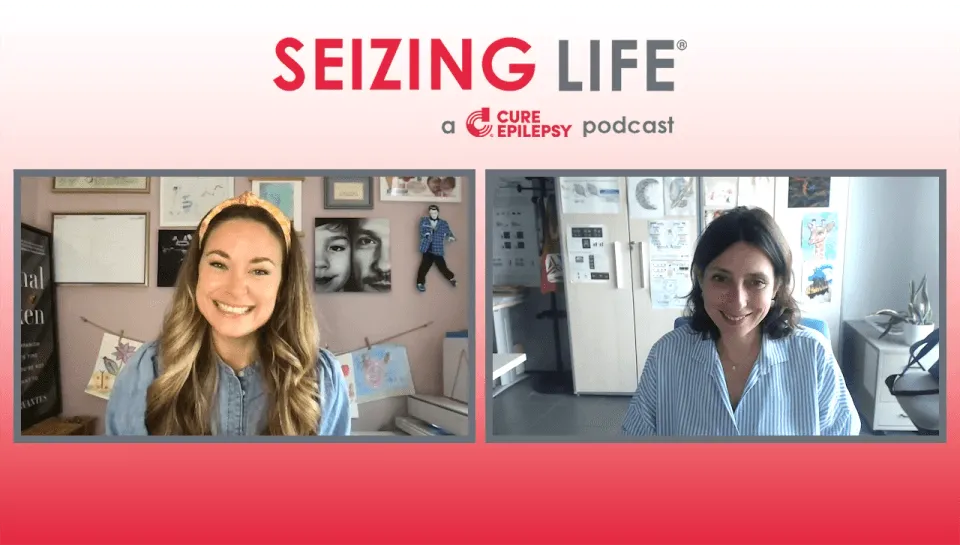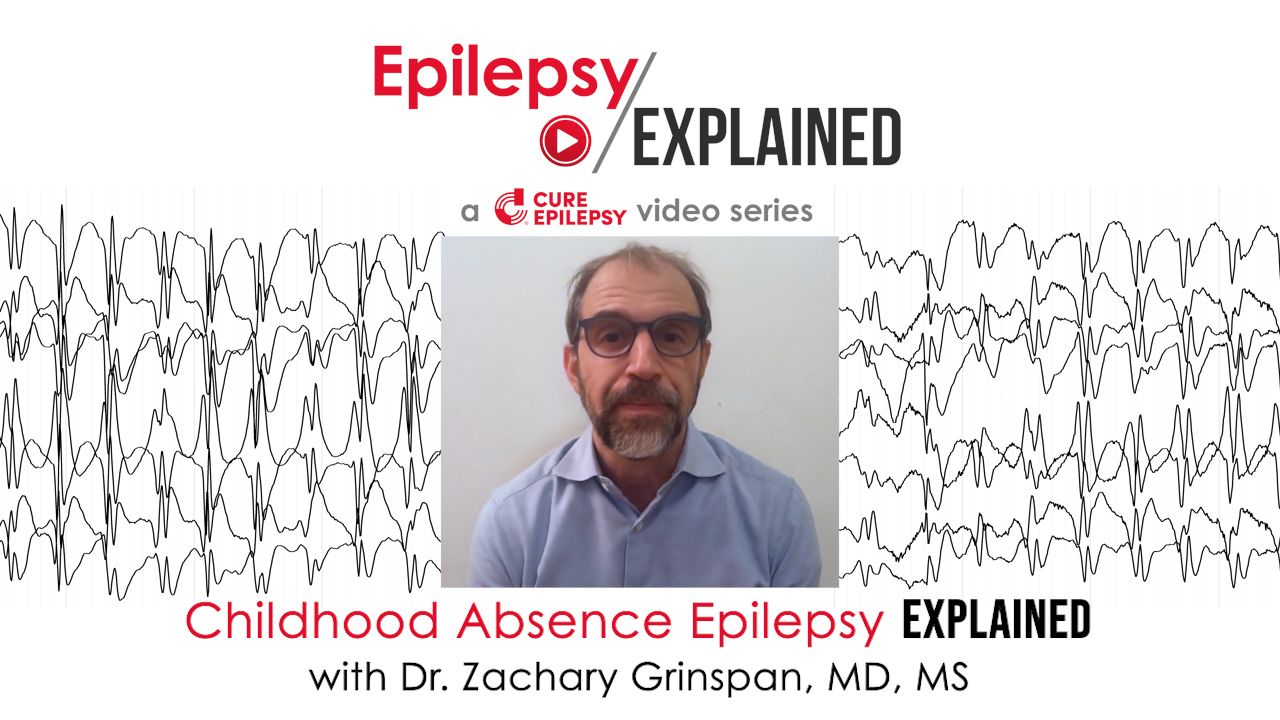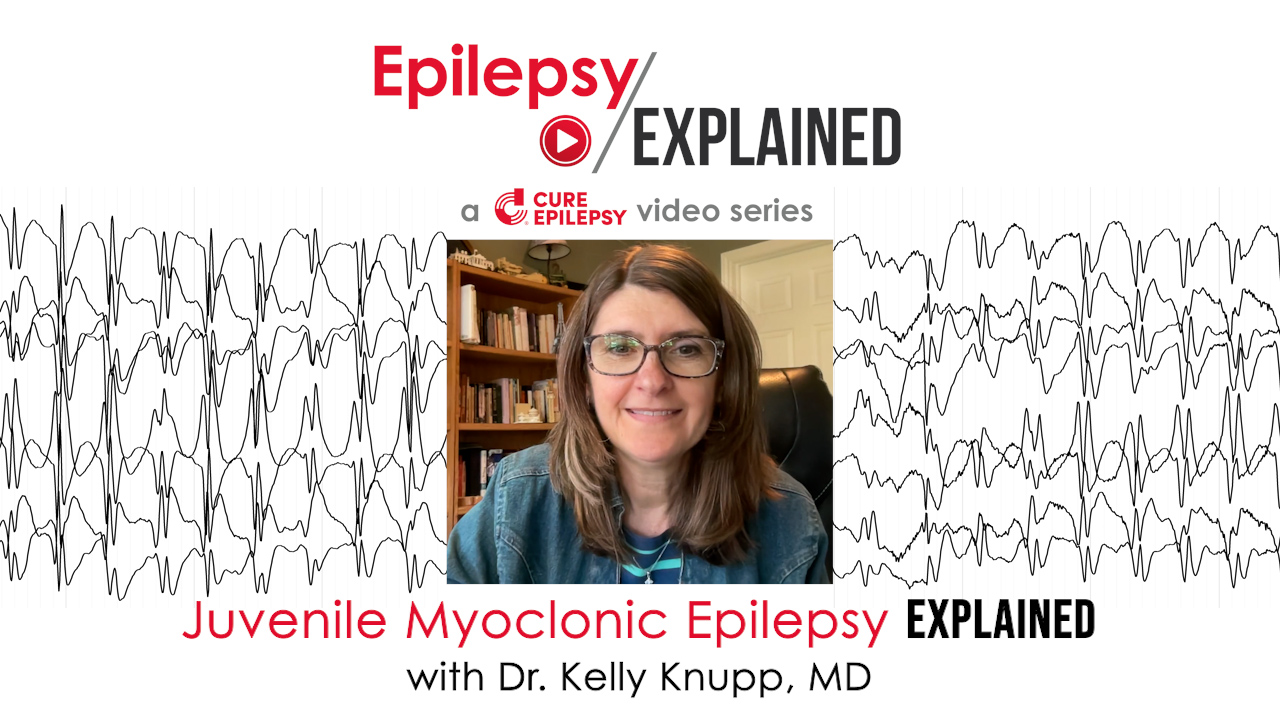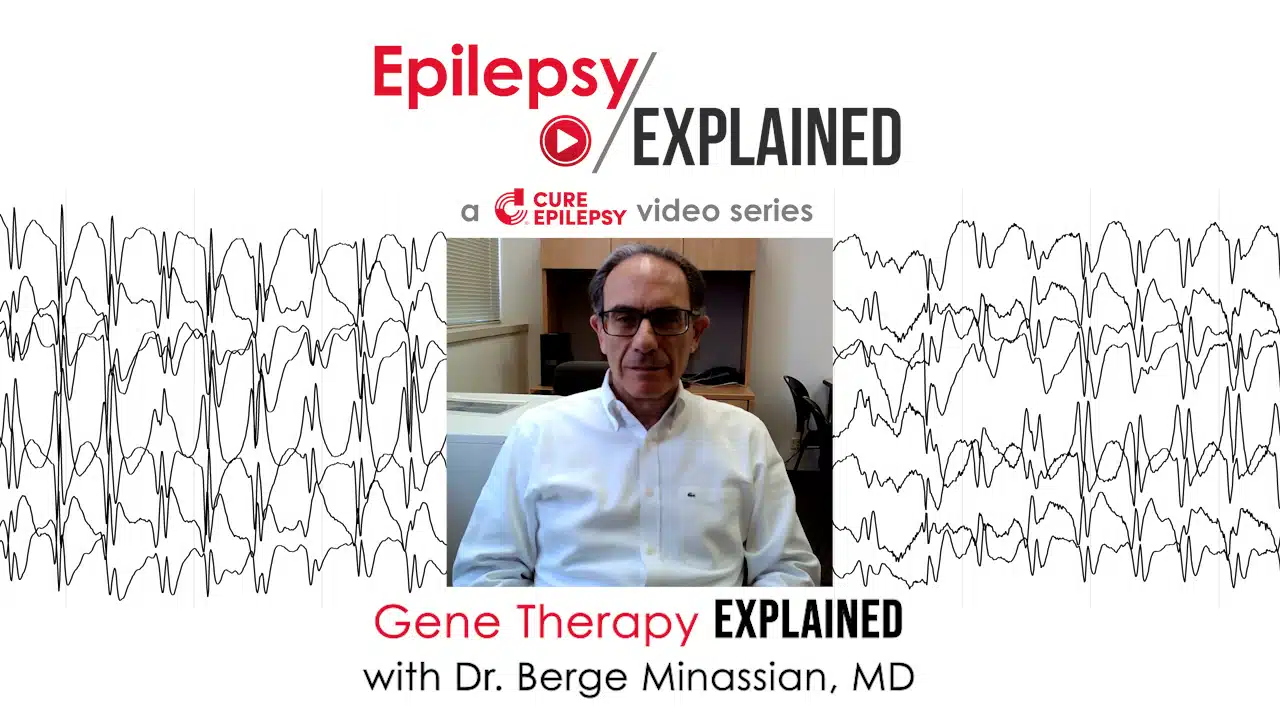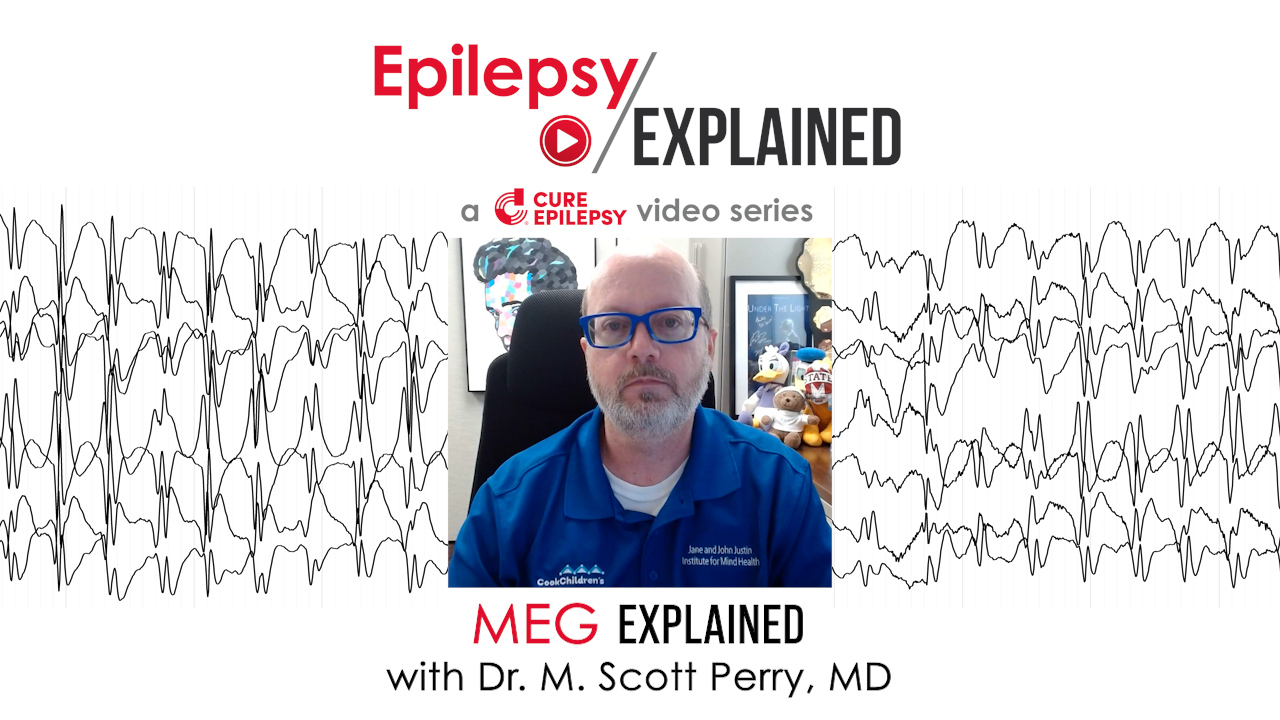Childhood Absence Epilepsy Explained: Diagnosis, Treatments, and Long-Term Prognosis
This month’s Epilepsy Explained focuses on childhood absence epilepsy. Dr. Zachary Grinspan, Director of Pediatric Epilepsy Research at Weill Cornell Medicine in New York, answers questions about childhood absence epilepsy including what to look for, how it’s diagnosed, and what the long-term prognosis is for children with absence epilepsy. In this episode, Dr. Grinspan answers the following questions:
0:00 Intro
0:16 What is childhood absence epilepsy and who is most often diagnosed with it?
1:04 What do seizures look like in absence epilepsy and what symptoms should I be looking for in my child?
2:15 Following an absence seizure, does a child have a post-ictal phase where they are tired or disoriented?
3:14 How is absence epilepsy diagnosed?
4:35 What causes absence epilepsy?
5:43 What are the treatments for childhood absence epilepsy, and how effective are they?
6:49 What comorbidities might accompany childhood absence epilepsy?
8:04 What is the long-term prognosis for childhood absence epilepsy, can children outgrow it?
Look for new episodes of Epilepsy Explained on the third Wednesday of every month here on our website and on CURE Epilepsy’s YouTube Channel.
Submit questions for future episodes of Epilepsy Explained here.
Episode Transcript
What is childhood absence epilepsy and who is most often diagnosed with it?
Dr. Zachary Grinspan:
Childhood absence epilepsy is a neurologic condition in childhood. It’s characterized by staring spells that are caused by abnormal electrical discharges in the brain, and the typical person that has this condition is somewhere between four and 10 years old. Most often we hear about it in early school age, six or seven years old. It can happen in boys or girls. It’s a little bit more common in girls, and typically these are children who are otherwise healthy, who more often than not do not have any other underlying neurologic conditions and may not have any family history. So it seems to come out of nowhere.
What do seizures look like in absence epilepsy and what symptoms should I be looking for in my child?
Dr. Zachary Grinspan:
Children with absence epilepsy have absence seizures. These are characterized by staring off into space without the ability to respond, different than other seizure types where people have jerks or they fall down, they lose consciousness. That doesn’t happen with absence seizures. When a child has one of these events, they stare off into space. Sometimes their eyes will twitch a little bit, sometimes their face twitches a little bit, sometimes their shoulders even will twitch, but not always. Sometimes it’s just staring off. Often their eyes seem to be either glazed or tilted off into another direction. The spells can last often six, eight or 10 seconds. Sometimes it can be as long as 20.
And then the thing that differentiates absence seizures from in inattention spells or daydreaming is that the children are unreachable during the spells. You can tap them on the shoulder, you can call their name and they won’t respond, and typically they don’t remember anything during the spells.
Following an absence seizure, does a child have a post-ictal phase where they are tired or disoriented?
Dr. Zachary Grinspan:
What a great question. So with childhood absence epilepsy and absence seizures, no, there’s really no postictal phase. A child may be doing an activity, they’ll have the absence seizure, and then as soon as it’s over, they go right back to doing whatever it is they were doing before. Sometimes we’ve even seen children who are riding a bicycle or walking or involved in some activity, and during the absence seizure, they may pause, but sometimes there’s some activity that seems to even continue during the seizure itself. And this is a big difference between absence seizures and many of the other seizures that we see in epilepsy like convulsions, generalized tonic-clonic seizures, drop attacks and things like that, focal seizures where children will have a post-ictal period where they’re confused, sleepy out of it after the seizure. With an absent seizure. We don’t see that.
How is absence epilepsy diagnosed?
Dr. Zachary Grinspan:
There’s a couple ways that we make the diagnosis. In the office sometimes we’ll ask a child to hyperventilate. For an older child, you might just ask them to take some deep breaths. For a younger child, sometimes we’ll give them a pinwheel to spin or we’ll give them a piece of paper and ask them to blow on it. There’s something about hyperventilation that sets off absent seizures. So sometimes just in the office by that maneuver, we’ll see the seizure and we’ll be able to make the diagnosis then and there. Commonly, we’ll also get a routine EEG where we’ll send the child to our EEG lab. They’ll put the leads on the child’s head and get an EEG recording. There’s a very characteristic pattern on the EEG that children with childhood epilepsy have. It’s called three-hertz spike in wave.
What’s interesting is you’ll see that activity begin on the EEG shortly after, within a second or two the seizure actually starts, and then you see the child staring off into space. The seizure then ends, and that can be a second or two before the EEG pattern ends. But this three-hertz spike and wave pattern is classic. You can recognize it across the room and that seals the diagnosis of childhood absence epilepsy.
What causes absence epilepsy?
Dr. Zachary Grinspan:
I wish I knew. I don’t think any of us really understand this. It can run in families, so sometimes you get a sense that there’s something heritable about it, but we haven’t identified a gene. We get this sense that there’s this reverberation that’s happening between some of the deeper brain structures in the surface between the thalamus and the cortex, thalamus being deep in the brain, cortex in the surface. And that three-hertz spike and wave activity is this electrical activity bouncing back and forth between those structures. So we have that understanding, but the underlying cause is really not well understood. The treatments that we use tend to manipulate some of the different channels that modulate electrical activity in the brain. So presumably those aren’t working quite right in childhood absence epilepsy, but we don’t know where it comes from. We don’t have a way to predict who’s going to get it. We don’t have a diagnostic marker. There’s no gene. And so the true answer is that we don’t know what causes it, that we have some understanding of what’s happening during the seizures.
What are the treatments for childhood absence epilepsy, and how effective are they
Dr. Zachary Grinspan:
We typically prescribe a daily anti-seizure medicine for childhood absence epilepsy. The one we typically start with is called Ethosuximide. It’s a drug we’ve had for decades, we know its safety profile, and it works 50 to 60% of the time. If that doesn’t work, there’s other anti-seizure drugs that we can rely on. Valproic acid is something that many of us will use. Sometimes we’ll use a drug called Levetiracetam or Clobazam. The effectiveness depends on the medicine and the child. Often, if the first medicine doesn’t work, the second one will. If the second medicine doesn’t work, we start wondering whether something else is actually going on, and we’ll often do some additional diagnostic testing. As an example, there’s a disorder called GLUT1 deficiency, and we have a genetic marker for that. If that’s the cause of the absence seizures, we don’t treat with medicine, we treat with a dietary therapy, the Ketogenic diet.
What comorbidities might accompany childhood absence epilepsy?
Dr. Zachary Grinspan:
Some children with childhood absence epilepsy, not all, but some, also have inattention and some trouble in school. These children typically walk talk, are performing at grade level and are in classes with their peers, but they may have trouble paying attention in school in addition to the seizures. What’s interesting is that if you treat the seizures, the inattention doesn’t always go away, and so often a child with this condition may benefit from a stimulant to help them pay attention in class. In my practice, I’ll often give kids Methylphenidate. Other doctors use different medicines. Rarely, if the absence seizures are due to GLUT1 deficiency or to a different condition, there may be other comorbidities associated with that condition. So children with GLUT1 deficiency may have more profound learning problems. They may also have abnormal movements, stiffness in their legs. Some of them have cognitive problems that can last for a lifetime. But if it’s just childhood absence epilepsy, the main thing we’re looking for as a comorbidity is inattention and trouble paying attention in school.
What is the long-term prognosis for childhood absence epilepsy, can children outgrow it?
Dr. Zachary Grinspan:
Most children outgrow this. The numbers vary depending on what you read. Some people say two-thirds of children outgrow it. Some people say it’s 95%. So I’m often very positive with families and give them a lot of hope that this is something that will be transient, that will go away when they get older. The way we test for this is after two years without seizures, we’ll start to take away the medicines and see how kids do, do the seizures come back or have they gone away? On occasion the childhood absence epilepsy is actually a precursor of lifelong epilepsy. And so for these children, the absence seizures are the first seizures that they have, and they may go on to have generalized tonic-clonic seizures, myoclonic seizures, other seizure types. In my own clinical practice, that’s uncommon. So most of the kids I’ve taken care of with childhood absence epilepsy, they do grow out of it. It just goes away, and then they go on to have a normal adolescence.


